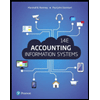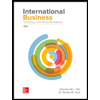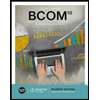acfi2003_group_report
.pdf
keyboard_arrow_up
School
University of New South Wales *
*We aren’t endorsed by this school
Course
2003
Subject
Business
Date
May 15, 2024
Type
Pages
16
Uploaded by LieutenantBraveryRaven4 on coursehero.com
1 ACFI2003 Management Accounting Group Report on Whitehaven Coal LECTURER Mr Stuart Smith STUDENTS Alec Donnelly c3374562 Thi Hong Hai (Felicia) Nghiem c3433848 Preyaan Ray c3359495 Benjamin Standing c3405054
2 Table of Content Table of contents ...........................................................................................................................
2 1. Exclusive summary (250 words) ..............................................................................................
3 2. External Analysis ......................................................................................................................
4 2.1. The PESTEL Analysis of the company’s macro environment
..........................................
4 2.2 The Porter's Five Forces Analysis of Whitehaven’s competitive / industry environment
6 3. Internal Analysis .......................................................................................................................
7 3.1
Core Competencies Evaluation using the VRIO Framework
.............................................
7 3.2 Risk analysis ............................................................................................................................
8 4. Strategic Recommendations for Whitehaven Coal .............................................................
10 4.1 Short- Medium Term Strategies: ........................................................................................
10 4.2 Medium-Long Term Strategies ...........................................................................................
11 Alignment with Shareholder Value Creation: .........................................................................
11 5 Balanced Scorecard .................................................................................................................
12 Bibliography
……………………………………………………………………………………..
14
3 1.
Executive Summary This report aims to provide a comprehensive analysis of Whitehaven Coal's external and internal environments, identifying key challenges and opportunities. Whitehaven Coal, a leading undiversified coal mining company, faces significant challenges and opportunities in its macro-
environment and internal operations. Political shifts towards renewable energy and stricter regulations pose threats to its traditional coal-focused business model. Economic factors such as exchange rate fluctuations impact its revenue streams, while technological advancements offer opportunities for operational efficiency. Social and environmental considerations highlight the importance of community engagement and sustainability initiatives. Legal compliance and environmental risks further underscore the need for proactive strategies. To address these challenges and capitalize on opportunities, we recommend a strategic approach focused on short, medium, and long-term initiatives. Short-term strategies include expanding into developing Asian markets and strengthening community relations. In the medium to long term, Whitehaven Coal should consider diversifying its energy portfolio and investing in technological advancements to enhance operational efficiency and sustainability. These strategies are aligned with shareholder value creation, aiming to maximize profitability, reduce risk, and ensure long-term sustainability. Implementation will require careful consideration of regulatory requirements, market dynamics, and stakeholder engagement. In conclusion, the report highlights the challenges and opportunities facing Whitehaven Coal, along with strategic pathways to enhance competitiveness, sustainability, and shareholder value creation.
4 2. External Analysis 2.1. The PESTEL Analysis of the company’s macro environment
Identify & understand the types of macro-environment trends
Determine & apply the relevant facts to the framework
Are the trends opportunities or threats for Whitehaven Coal
–
explain
Political:
Government Policies and Regulations: shifts in regulations governing emissions standards, land use, or water management. example: transitioning to renewable energy sources to reduce carbon emissions (Rumokoy et al., 2023; Webb et al., 2020).. Australia's coal industry is facing pressure due to declining demand for coal and increasing competition from renewable energy (Webb et al., 2020).. Threat
: This trend threatens Whitehaven Coal as it relies on coal mining, significantly contributing to carbon emissions. The transition to renewable energy and stricter climate policies could lead to reduced demand for coal, lower prices, and regulatory challenges for the company (Trench et al., 2014). Economic
Exchange Rates
: Fluctuations in exchange rates, particularly the AUD/USD exchange rate, can impact Whitehaven Coal's revenue and profitability The AUD/USD exchange rate affects Whitehaven Coal's international export competitiveness. A stronger Australian dollar than the US dollar reduces export revenues, while a weaker one increases them. Opportunity: Whitehaven Coal's exports may be more competitive with a weaker Australian dollar than the US dollar, increasing revenues and profitability. Currency hedging reduces exchange rate risks and stabilises cash flows. Threat: A stronger Australian dollar may lower Whitehaven Coal's export revenues and profitability, especially if production costs remain in Australian dollars. Currency fluctuations add uncertainty and affect financial planning. Social 1) Community Engagement and Relations: Whitehaven Coal's activities can impact local communities in terms of employment opportunities, economic development, and infrastructure. (Stakeholder Engagement and Community Investment Strategy, 2021) 2) Employment Opportunities
Employment Opportunities: Mining operations can provide employment opportunities for local residents, contributing to economic development and social mobility(Coal, 2022, 2023, 2024a; Franks et al., 2010). Effective engagement with local communities is essential for maintaining positive community relations and securing social license to operate (Franks et al., 2010; O'Faircheallaigh, 2006). Whitehaven Coal should prioritize hiring from local communities, providing training and skills development programs, and fostering a diverse and inclusive workforce. 1.1 Opportunity
Whitehaven Coal faces both opportunities and threats from this trend. Engaging with local residents, conducting impact assessments, and addressing community concerns can boost the company's corporate citizenship and community support. 1.2 Threat
Ineffective community engagement can lead to opposition, protests, and regulatory issues, threatening the company's operations and reputation. 2.1 Opportunity
Hiring locally, training, and creating a diverse and inclusive workforce can improve social cohesion, unemployment, and regional sustainability. Whitehaven Coal can improve its social licence and
5 community relations by supporting economic growth and employment. Technological
Australia's coal mines are becoming larger and more efficient due to technological advancements. Automation, digitalization, and innovations in mining technologies are improving productivity and reducing costs(Coal, 2024b; Dyson, 2024). Technological advancements are enabling larger-scale and more cost-
effective coal mining operations in Australia(Coal, 2020, 2023, 2024b; Webb et al., 2020). Improved efficiency and productivity in coal mining contribute to maintaining Australia's competitiveness in the global coal market(Webb et al., 2020). Opportunity:
On one hand, adopting advanced technologies can enhance the company's operational efficiency, reduce costs, and improve competitiveness. Threat
: It also poses a threat as increased efficiency in coal mining globally could lead to oversupply, putting downward pressure on coal prices and profitability. Enviromental
Increasing Focus on Climate Change and Renewable Energy:the growing urgency to address climate change, leading to increased scrutiny of coal mining and consumption. There's a global push towards transitioning to renewable energy sources to reduce carbon emissions(Baer, 2016; Webb et al., 2020). A need for significant changes in energy systems to limit global warming to 1.5°C. Australia's coal industry is facing pressure due to declining demand for coal and increasing competition from renewable energy
.(Thomson, 2023)
Threat:
Whitehaven Coal as it relies on coal mining, which is a significant contributor to carbon emissions. The transition to renewable energy and stricter climate policies could lead to reduced demand for coal, lower prices, and regulatory challenges for the company(Coal, 2023). Legal
Issues arising from License to (LTO): need to obtain specific licenses or permits from government authorities to conduct its coal mining operations. These licenses typically include environmental permits, mining leases, land use permits, and water licenses. => to create long-term value for investors Whitehaven Coal must meet many regulations to operate its mines. Environmental standards, community consultation, and safety and health regulations must be met. Multiple government agencies, indigenous stakeholders, and local communities are involved in obtaining and renewing operating licences, which can take time.
(Top Mining and Metals Risks and Opportunities in 2022, n.d.)
Opportunity: - Whitehaven Coal can legally conduct mining activities by obtaining and maintaining licences, adhering to regulatory standards and best practices. - Building strong relationships with regulatory authorities, indigenous communities, and other stakeholders during licence application can improve the company's social licence to operate and facilitate ongoing cooperation and support. Threat: - Licence delays or renewals can disrupt Whitehaven Coal's operations, causing project delays, higher costs, and reputational harm. - Non-compliance with licence conditions or regulatory requirements can result in fines, penalties, or mining activity suspension, threatening the
6 company's finances and future. 2.2 The Porter's Five Forces Analysis of Whitehaven’s competitive / industry environment This analysis examines Whitehaven Coal's competitive landscape using Porter's Five Forces framework (Porter, 2008). Here's a breakdown of each force with key factors influencing it: Step 1
Step 2
Step 3
Force
Selected Factors Influencing Force
Chosen Factors to Discuss
Conclusion - Opportunity or Threat
Threat of New Entrants
Economies of scale, capital expenditure, access to distribution channels, government regulations - High upfront capital expenditure for mine development and infrastructure (T) (EY, 2023). - Stringent environmental regulations can make obtaining permits and starting new mines challenging (T) (World Bank, 2024). Threat (Low):
The significant financial and regulatory hurdles create a strong barrier for new entrants (EY, 2023; World Bank, 2024). Bargaining Power of Suppliers
Concentration of suppliers, availability of substitutes, switching costs - Limited number of key suppliers for specialized mining equipment and technology(International Energy Agency, 2023). - High costs and complexities associated with switching suppliers for critical equipment (T) (International Energy Agency, 2023). Threat (Moderate):
While the supplier pool is limited, Whitehaven Coal's size and established relationships can offer some leverage in negotiations (T) (International Energy Agency, 2023). However, the high switching costs limit Whitehaven Coal's bargaining power to an extent. Bargaining Power of Buyers
Concentration of buyers, buyer volume, information asymmetry, availability of substitutes -Relatively few large steel mills in Asia drive demand for high-quality metallurgical coal (T) (Wood Mackenzie, 2024). - These buyers have significant buying power due to their large order volumes (T) (Wood Mackenzie, 2024). Whitehaven Coal's dependence on a limited number of powerful buyers gives them significant control over pricing and contract terms (T) (Wood Mackenzie, 2024). The growing availability of substitute resources further strengthens the buyers' position. Threat of Substitutes
Technological advancements in - Rapid advancements in solar, wind, and battery storage Threat (High):
The increasing affordability and accessibility of
Your preview ends here
Eager to read complete document? Join bartleby learn and gain access to the full version
- Access to all documents
- Unlimited textbook solutions
- 24/7 expert homework help
Related Questions
14/Which of the following are the tools of management accounting?
i. Standard costing
ii. Cash flow statement
iii. Budgeting
iv. Responsibility accounting
a.
i ,ii, iii & iv
b.
i, ii & iii
c.
i, ii & iv
d.
ii ,iii &iv
arrow_forward
The following data was gathered during one of the recent audits of Cash Disbursement Section. One of the findings was on the outdated Delegation of Authority to policy. In preparing a report of the findings, identify the elements of an audit findings for each data (in order).
1. The delegation authority is updated biannually and not when changes in personnel or
responsibilities of authorized individuals occur. 2. The delegation of authority policy list three individuals who are no longer with the
company. Additionally, four individuals were identified who are new in their positions that should have disbursement authority, but are not listed in the policy.
3. Disbursements may be made that are not in accordance with management's or BOD's direction.
4. Authority over the disbursement of funds should only be delegated to individuals whose responsibility justify such authority.
O Cause, Effect, Condition, Criteria
O Condition, Effect, Cause, Criteria
O Cause, Condition, Effect,…
arrow_forward
Q. The company's financial problems are the ____________result of years of poor management.
stable
inevitable
inflexible
irresistible
arrow_forward
Subject: Prince Georges County Maryland. Need the following answered - Brief introduction to the ACFR - Highlight the total revenue for the fiscal year - Highlight the total expenditures - Mention the net position at year-end
- Include a note on any major capital projects or debt issuance - Present the specific item of interest you found in the ACFR report - Discuss its significance or impact on the county's finances - Include relevant figures or
percentages to quantify the importance - Provide a graphical representation if possible (e.g., a bar chart or pie chart to illustrate budget allocation or revenue sources)
arrow_forward
87 In connection with a varlable-rate
application, a lender must provide which of the
following documents?
A) An initial escrow statement
B) A variable-rate periodic statement disclosure
C) A list of Federal Housing Administration (FHA)
home equity conversion mortgage counselors
D) A booklet entitled "Consumer Handbook on
Adjustable-Rate Mortgages"
arrow_forward
470 1
Which of the following is not a step in portfolio management?
a. develop a policy statement
b. study current financial and economic conditions
c. construct the portfolio
d. monitor investor's needs and market conditions
e. sell all assets and reinvestment proceeds at least once a year.
arrow_forward
44)
Balance sheet includes ___________________ of the firm.
a.
Capital
b.
Liabilities
c.
Assets
d.
All the options
arrow_forward
marks)
li. Explain how a "Problem" is one of the roots of opportunity.
12. What is 'working capital?
13. Define Consumer-to-Business transaction (C2B). Give one Example.
arrow_forward
SLO 9.1. Blanket purchase orders:
a.Reduce costs by decreasing the number of purchase orders issuedb.Cover multiple purchase requirements on one orderc.Are difficult to prepared.Reduce costs by decreasing the number of purchase orders issued and cover multiple purchase requirements on one ordere.Reduce costs by decreasing the number of purchase orders issued, cover multiple purchase requirements on one order, and are difficult to prepare
arrow_forward
Mustafa Computer Supplies LLC is
selling computer accessories for
wholesale and retail business. Which
of the following is False Statement?
а.
Mustafa Computer Supplies LLC is a
merchandise business
b.
Mustafa Computer Supplies LLC is
doing a retail business
С.
000
Mustafa Computer Supplies LLC is a
doing a manufacturing business
d.
Mustafa Computer Supplies LLC is
doing a wholesale business
10:10 am
arrow_forward
Question 1
a)Describe the procedure for appointment of auditors.
b) Discuss 5 principal rights of auditors.
arrow_forward
Under federal law, a tax exempt Health Savings Account can only be opened for an individual who is
Ο Α.
covered by a qualified High Deductible Health Plan
covered by Long Term Care Insurance
entitled to Medicare benefits
eligible to be claimed as a dependent on another person's tax return
B.
OC.
O D.
arrow_forward
Strongly Disagree
Disagree
Agree
Strongly Agree
Question
7. Information technology allows for tracking the delivery of a product.
9. As long as a company offers a product or service at a low price, it will sell more than competitors do.
10. I think suppliers must be able to respond quickly to inventory needs.
11. I think decreasing the time to complete a process and reducing costs result in decreased customer satisfaction.
12. Computerized order processing provides for better information management.
SH
arrow_forward
20. Juan collects the mail for XYZ Company. He doesn't read anything. He only signs his name to
all the required documents and sends them to the company. What type of beneficial ownership
concealment does this describe?
A. Use of proxies
B. Dilution of sanctioned ownership
C. Restructuring of corporate assets
D. Complex corporate ownership arrangement
21. Who is responsible for reviewing sanctions screening alerts within an organization?
A. An intemal auditor
B. A sancuons compliance officer
C. A relationship manager
D. A board member
22. In case of a confirmed sanctions breach, how soon must all the related activity stop to avold
future breaches?
A. Within the next 2 hours
B. The activity may continue until the breach is officially confirmed by a regulator
C. Wichin the next 24 hours
D. Immediately
arrow_forward
1. How do companies primarily fund themselves, through issuing debt or equity?
Select one:
a. Debt.
b. Equity
c. Neither
2. What is a shelf registration?
a. A shelf registration means that an offering of securities is delayed.
b. A shelf registration means that the issuer will receive extra scrutiny by the SEC.
c. A shelf registration means that companies are allowed to skip a lot of filing requirements when issuing a security.
arrow_forward
Cash flow statements examine the net changes in assets, liabilities, and equities of a firm and are a good indicator of ….
Question 1 options:
A)
industry performance
B)
management performance
C)
how funds are being used
D)
what revenue streams are coming into the firm
E)
B, C, and D are correct
arrow_forward
i). Store manager MIze company’s car for personal purpose because he is the only person that monitor the movement and usage of the car.
ii). Ali corporation booked revenues earlier than it should have because it was at risk of missing analyst estimates.
Explain what the 2 types of fraud committed in the situation.
arrow_forward
6/ Mr Hamed is working as a financial manager in a company he has to submit a repost on sales performance of company to the top management. He depended on internal sources to collect data and prepare repost. Which of the following sources helpful to collect data and a prepare report?
a.
Data from marketing department
b.
Data from government
c.
Data directly collected from the origin of item
d.
Data from news papers
arrow_forward
At a recent board meeting of Co., a non-executive director suggested that the company’s remuneration committee should consider scrapping the company’s share option scheme, since the executives could be rewarded by the scheme even when they do not perform well. A second non-executive director had a view that, even when the executives act in ways which decrease the agency problem, they might not be rewarded by the share option scheme if the stock markets were in decline.
REQUIRED: Explain the nature of the agency problem and discuss the use of share option schemes and performance-related pay as methods of reducing the agency problem in a stock-market listed company.
arrow_forward
The XYZ Bank sets up a temporary location after the bank bolding aroyed by a teftate the expenses
OA
direct loss
OB.
indirect loss
OD.
proximate cause
arrow_forward
3. In preparing for an integrated report, and the cost outweigh the benefit, can still integrated reporting be opt? Explain.
arrow_forward
SEE MORE QUESTIONS
Recommended textbooks for you

BUSN 11 Introduction to Business Student Edition
Business
ISBN:9781337407137
Author:Kelly
Publisher:Cengage Learning

Essentials of Business Communication (MindTap Cou...
Business
ISBN:9781337386494
Author:Mary Ellen Guffey, Dana Loewy
Publisher:Cengage Learning

Accounting Information Systems (14th Edition)
Business
ISBN:9780134474021
Author:Marshall B. Romney, Paul J. Steinbart
Publisher:PEARSON


International Business: Competing in the Global M...
Business
ISBN:9781259929441
Author:Charles W. L. Hill Dr, G. Tomas M. Hult
Publisher:McGraw-Hill Education

Related Questions
- 14/Which of the following are the tools of management accounting? i. Standard costing ii. Cash flow statement iii. Budgeting iv. Responsibility accounting a. i ,ii, iii & iv b. i, ii & iii c. i, ii & iv d. ii ,iii &ivarrow_forwardThe following data was gathered during one of the recent audits of Cash Disbursement Section. One of the findings was on the outdated Delegation of Authority to policy. In preparing a report of the findings, identify the elements of an audit findings for each data (in order). 1. The delegation authority is updated biannually and not when changes in personnel or responsibilities of authorized individuals occur. 2. The delegation of authority policy list three individuals who are no longer with the company. Additionally, four individuals were identified who are new in their positions that should have disbursement authority, but are not listed in the policy. 3. Disbursements may be made that are not in accordance with management's or BOD's direction. 4. Authority over the disbursement of funds should only be delegated to individuals whose responsibility justify such authority. O Cause, Effect, Condition, Criteria O Condition, Effect, Cause, Criteria O Cause, Condition, Effect,…arrow_forwardQ. The company's financial problems are the ____________result of years of poor management. stable inevitable inflexible irresistiblearrow_forward
- Subject: Prince Georges County Maryland. Need the following answered - Brief introduction to the ACFR - Highlight the total revenue for the fiscal year - Highlight the total expenditures - Mention the net position at year-end - Include a note on any major capital projects or debt issuance - Present the specific item of interest you found in the ACFR report - Discuss its significance or impact on the county's finances - Include relevant figures or percentages to quantify the importance - Provide a graphical representation if possible (e.g., a bar chart or pie chart to illustrate budget allocation or revenue sources)arrow_forward87 In connection with a varlable-rate application, a lender must provide which of the following documents? A) An initial escrow statement B) A variable-rate periodic statement disclosure C) A list of Federal Housing Administration (FHA) home equity conversion mortgage counselors D) A booklet entitled "Consumer Handbook on Adjustable-Rate Mortgages"arrow_forward470 1 Which of the following is not a step in portfolio management? a. develop a policy statement b. study current financial and economic conditions c. construct the portfolio d. monitor investor's needs and market conditions e. sell all assets and reinvestment proceeds at least once a year.arrow_forward
- 44) Balance sheet includes ___________________ of the firm. a. Capital b. Liabilities c. Assets d. All the optionsarrow_forwardmarks) li. Explain how a "Problem" is one of the roots of opportunity. 12. What is 'working capital? 13. Define Consumer-to-Business transaction (C2B). Give one Example.arrow_forwardSLO 9.1. Blanket purchase orders: a.Reduce costs by decreasing the number of purchase orders issuedb.Cover multiple purchase requirements on one orderc.Are difficult to prepared.Reduce costs by decreasing the number of purchase orders issued and cover multiple purchase requirements on one ordere.Reduce costs by decreasing the number of purchase orders issued, cover multiple purchase requirements on one order, and are difficult to preparearrow_forward
- Mustafa Computer Supplies LLC is selling computer accessories for wholesale and retail business. Which of the following is False Statement? а. Mustafa Computer Supplies LLC is a merchandise business b. Mustafa Computer Supplies LLC is doing a retail business С. 000 Mustafa Computer Supplies LLC is a doing a manufacturing business d. Mustafa Computer Supplies LLC is doing a wholesale business 10:10 amarrow_forwardQuestion 1 a)Describe the procedure for appointment of auditors. b) Discuss 5 principal rights of auditors.arrow_forwardUnder federal law, a tax exempt Health Savings Account can only be opened for an individual who is Ο Α. covered by a qualified High Deductible Health Plan covered by Long Term Care Insurance entitled to Medicare benefits eligible to be claimed as a dependent on another person's tax return B. OC. O D.arrow_forward
arrow_back_ios
SEE MORE QUESTIONS
arrow_forward_ios
Recommended textbooks for you
 BUSN 11 Introduction to Business Student EditionBusinessISBN:9781337407137Author:KellyPublisher:Cengage Learning
BUSN 11 Introduction to Business Student EditionBusinessISBN:9781337407137Author:KellyPublisher:Cengage Learning Essentials of Business Communication (MindTap Cou...BusinessISBN:9781337386494Author:Mary Ellen Guffey, Dana LoewyPublisher:Cengage Learning
Essentials of Business Communication (MindTap Cou...BusinessISBN:9781337386494Author:Mary Ellen Guffey, Dana LoewyPublisher:Cengage Learning Accounting Information Systems (14th Edition)BusinessISBN:9780134474021Author:Marshall B. Romney, Paul J. SteinbartPublisher:PEARSON
Accounting Information Systems (14th Edition)BusinessISBN:9780134474021Author:Marshall B. Romney, Paul J. SteinbartPublisher:PEARSON
 International Business: Competing in the Global M...BusinessISBN:9781259929441Author:Charles W. L. Hill Dr, G. Tomas M. HultPublisher:McGraw-Hill Education
International Business: Competing in the Global M...BusinessISBN:9781259929441Author:Charles W. L. Hill Dr, G. Tomas M. HultPublisher:McGraw-Hill Education

BUSN 11 Introduction to Business Student Edition
Business
ISBN:9781337407137
Author:Kelly
Publisher:Cengage Learning

Essentials of Business Communication (MindTap Cou...
Business
ISBN:9781337386494
Author:Mary Ellen Guffey, Dana Loewy
Publisher:Cengage Learning

Accounting Information Systems (14th Edition)
Business
ISBN:9780134474021
Author:Marshall B. Romney, Paul J. Steinbart
Publisher:PEARSON


International Business: Competing in the Global M...
Business
ISBN:9781259929441
Author:Charles W. L. Hill Dr, G. Tomas M. Hult
Publisher:McGraw-Hill Education
